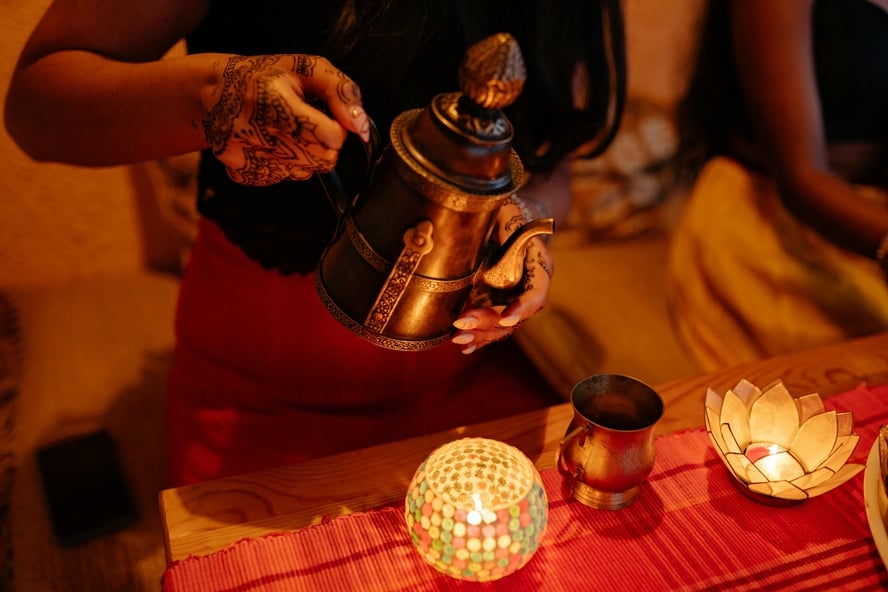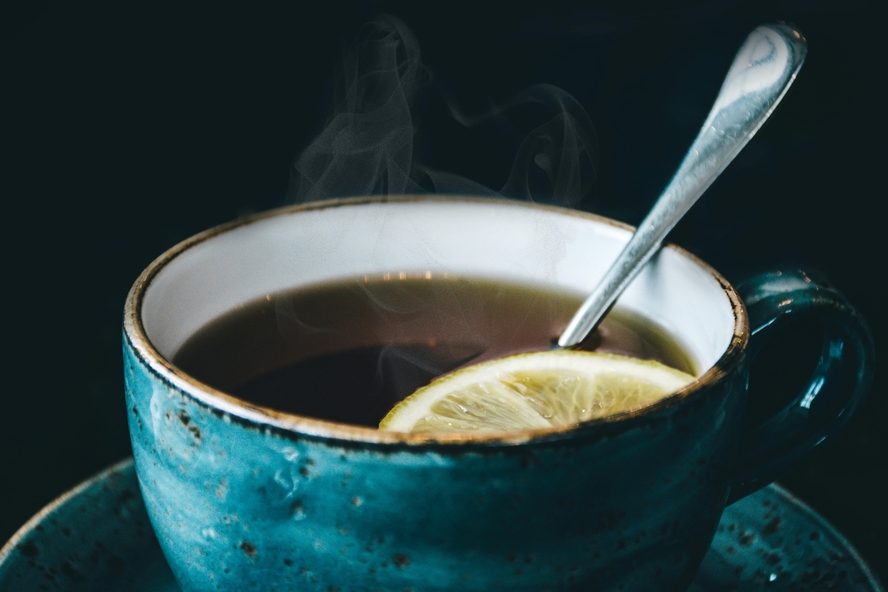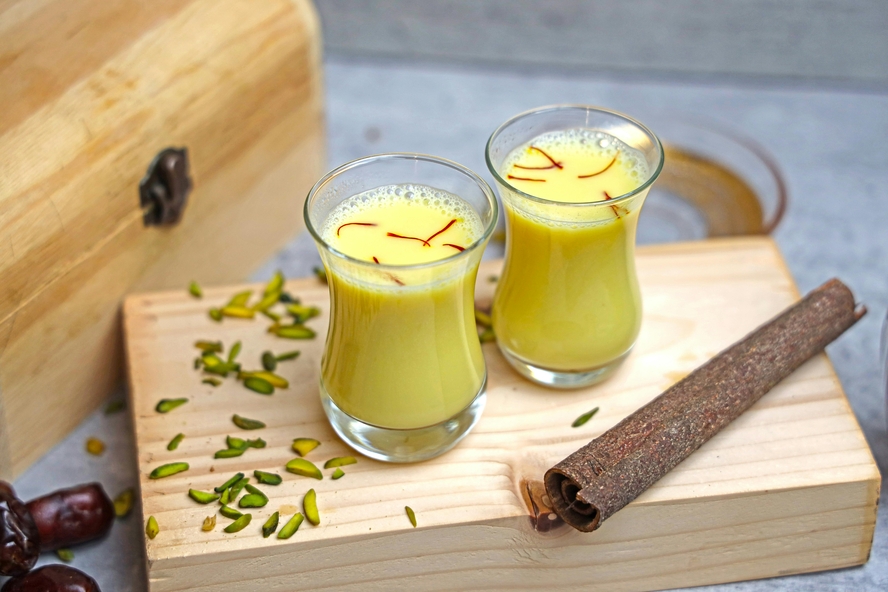
If I stated to you, “It’s nearly Libra season,” you’d in all probability know precisely what I used to be speaking about. But when I stated “It’s nearly vata dosha season,” would what I meant?
Vata season refers back to the time of 12 months that the Ayurvedic vitality sample vata dosha is cresting. In accordance with Ayurveda, every season is related to a dosha, or a pair of important components. Vata season happens within the late fall and early winter (the cooler and dry elements of September via February) — throughout this time, being aware of any dysfunction in our our bodies and minds attributable to an elevated vata may also help us keep balanced.
By no means heard of Ayurveda or undecided what I’m speaking about? Let’s break issues down.
What Is Ayurveda?
Ayurveda is the oldest therapeutic system on the earth. It’s a 5,000-year-old conventional medication system native to India. The time period Ayurveda is derived from the Sanskrit phrases ayu (life) and veda (science or information), and Ayurveda additionally interprets to information of life.

Need extra wellness views from specialists of their fields? Join for the publication for extra non-toxic residing steerage and wellness recommendation.
Understanding Doshas in Ayurveda
In accordance with Ayurveda, there are three vitality patterns often known as “doshas” that exist in each organic organism. Dosha is a Sanskrit phrase that actually means “stain” or “lesion,” however it primarily conveys the concept of one thing that may be injured or imbalanced. The three doshas are vata, pitta, and kapha.
All three Ayurvedic doshas are current in each cell and each tissue of each organism, simply in assorted proportions. Every dosha has plenty of corresponding qualities. They govern the entire physique’s processes, from our bodily capabilities to our ideas and emotions.
What Are the Three Ayurvedic Doshas?
Ayurveda tells us that the whole lot within the universe (together with ourselves!) is made up of the 5 important components. These 5 components are Ether/Area, Air, Hearth, Water, and Earth. When mixed, pairs of those components kind the three Ayurvedic doshas.
- Vata: Ether (area) and Air
- Pitta: Hearth and Water
- Kapha: Water and Earth
Although everybody has a few of every dosha, most individuals are likely to have an abundance of 1 or two of the doshas.
Why Do the Ayurvedic Doshas Matter?
Simply as everybody has a singular fingerprint, every particular person has a selected sample of vitality — a person mixture of bodily, psychological, and emotional traits — which includes their very own structure. This distinctive structure is decided in the meanwhile of conception and is your individual private blueprint, or prakriti (nature).
When in steadiness, vata, pitta, and kapha govern the physique capabilities. However when imbalanced, they’ll trigger well being points and illnesses. The important thing side of Ayurvedic therapeutic is to determine which dosha is out of concord and restore well being by bringing it to its authentic prakriti (balanced state).

As you progress via life, the proportion of the three doshas always fluctuates based mostly in your surroundings and geographic location, your food regimen, your age, stress ranges, and even the time of day. As they transfer out and in of steadiness, the doshas can have an effect on your emotional, bodily, and psychological wellbeing. Any state of dosha imbalance is named vikruti.
Doshas and Seasons
As talked about, doshas additionally crest throughout completely different seasons. In Ayurveda, late winter to spring is called kapha season, summer season is pitta season, and autumn and the early elements of winter are vata season. Vata season is across the nook, so let’s check out the best way to hold the vata dosha balanced.
The Energy of Vata Dosha
What’s vata dosha, and the way does it have an effect on our our bodies and minds? In accordance with Ayurveda, the nervous system is ruled by the vata dosha. When our vata is in steadiness, our breath helps our nervous system. Our physique actions are sleek and unhindered, but managed. There may be homeostasis between tissues and organs.
The Results of an Imbalanced Vata

When vata dosha is out of steadiness, the result’s worry and anxiousness. Actions turn out to be erratic, extreme, decreased, or are blocked. Enjoyable truth: vata not solely regulates the nervous system but in addition our creativity, so a vata imbalance may negatively have an effect on our potential to create. Different signs of an imbalanced vata dosha might embody:
- Hoarse voice
- Thoughts chatter
- Burping
- Chilly arms and ft
- Feeling unanchored
- Restlessness
- Hiccups
- Gasoline
- Bloating (take a peek at some suggestions for addressing bloating with Ayurveda)
- Stiffness in muscle tissues and joints
- Shortness of breath
- Cracking joints
- Lack of ability to focus
- Hassle sleeping
- Dry cough
- Constipation
- Twitching
How Ayurveda Reworked My Life
In the summertime of 2023, each my father and father-in-law handed away inside two days of one another. Within the aftermath, folks had been shocked by my “stability” and productiveness regardless of the grief I used to be experiencing.
Shortly after, I accomplished my Doctorate in Ayurveda, completed a enterprise course, and wrote a brand new e-book THE LOSS THAT BINDS US (a grief guide with 108 suggestions to assist grievers and their assist methods as they navigate troublesome instances). When folks requested how I had managed to indicate up day by day, I’d say, “It’s due to the Ayurvedic food regimen and way of life.”
I firmly consider within the energy of Ayurveda to assist discover steadiness in all facets of your life, and I hope sharing the following tips can give you a possible instrument in case you ever end up in want of therapeutic.
Easy Tricks to Maintain Your Vata Dosha Balanced Throughout Vata Season and Past

- Stick with an everyday routine. Get up and go to mattress at a hard and fast time.
- Don’t skip meals, and eat on a constant schedule. Ayurveda recommends consuming three balanced meals to pacify vata. A nutritious diet based mostly on Ayurveda might make all of the distinction.
- Eat heat, cooked meals, which implies avoiding uncooked salads or chilly meals each time potential.
- Extreme train can exacerbate vata, so don’t push it throughout this season and go for gentler exercises.
- Meditation is instrumental in pacifying vata as a result of it requires a withdrawal of the senses (or a elimination of exterior distractions — assume much less display screen time and extra stillness).
- Vata Season tends to be dry, so bear in mind to hydrate your system with water and heat, natural teas.
- Self-massage or abhyanga with heat oil (I like to recommend sesame oil!) is nice for nourishing and hydrating the physique. Heat baths can have an analogous impact — strive making these Ayurvedic tub salts or this Ayurveda facial masks for a particular deal with.
- Don’t overwhelm your self by including an excessive amount of to your plate throughout this time! Your vata will already be in overdrive, so no must overdo it.
- Hearken to your physique; it holds infinite knowledge.
“Ayurveda is the science of life that teaches us the best way to stay in concord with nature and the world round us.”
Dr Robert Svoboda
Disclaimer: The content material is only informative and academic in nature and shouldn’t be construed as medical recommendation. The data is just not meant to be used within the prognosis, remedy, treatment, or prevention of any illness. Please use the content material solely in session with an applicable licensed medical or healthcare skilled. In case you are in search of recommendation from a educated Ayurvedic Physician, contact me.
Learn Extra on Natural Authority
